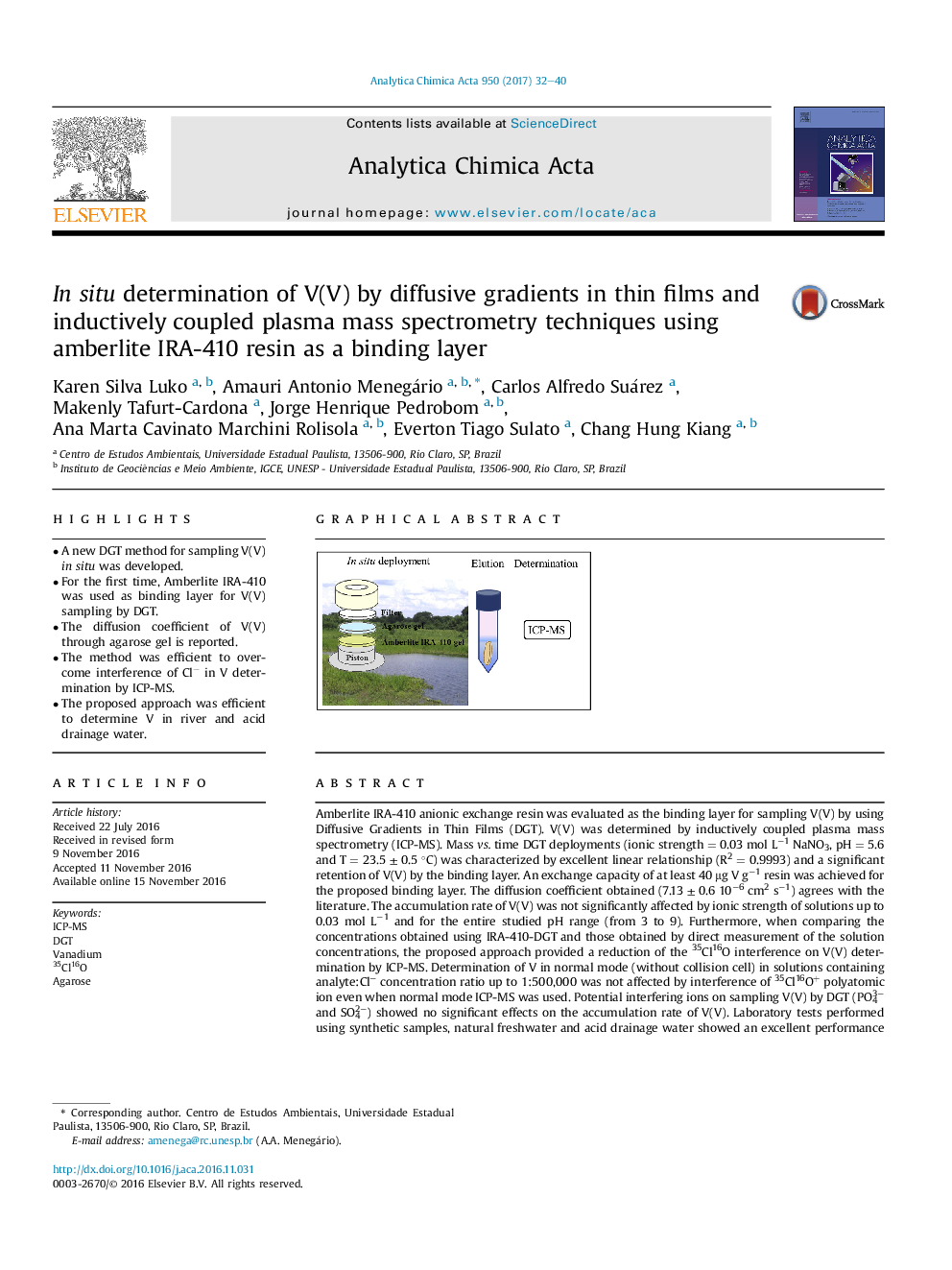| Article ID | Journal | Published Year | Pages | File Type |
|---|---|---|---|---|
| 5131063 | Analytica Chimica Acta | 2017 | 9 Pages |
â¢A new DGT method for sampling V(V) in situ was developed.â¢For the first time, Amberlite IRA-410 was used as binding layer for V(V) sampling by DGT.â¢The diffusion coefficient of V(V) through agarose gel is reported.â¢The method was efficient to overcome interference of Clâ in V determination by ICP-MS.â¢The proposed approach was efficient to determine V in river and acid drainage water.
Amberlite IRA-410 anionic exchange resin was evaluated as the binding layer for sampling V(V) by using Diffusive Gradients in Thin Films (DGT). V(V) was determined by inductively coupled plasma mass spectrometry (ICP-MS). Mass vs. time DGT deployments (ionic strength = 0.03 mol Lâ1 NaNO3, pH = 5.6 and T = 23.5 ± 0.5 °C) was characterized by excellent linear relationship (R2 = 0.9993) and a significant retention of V(V) by the binding layer. An exchange capacity of at least 40 μg V gâ1 resin was achieved for the proposed binding layer. The diffusion coefficient obtained (7.13 ± 0.6 10â6 cm2 sâ1) agrees with the literature. The accumulation rate of V(V) was not significantly affected by ionic strength of solutions up to 0.03 mol Lâ1 and for the entire studied pH range (from 3 to 9). Furthermore, when comparing the concentrations obtained using IRA-410-DGT and those obtained by direct measurement of the solution concentrations, the proposed approach provided a reduction of the 35Cl16O interference on V(V) determination by ICP-MS. Determination of V in normal mode (without collision cell) in solutions containing analyte:Clâ concentration ratio up to 1:500,000 was not affected by interference of 35Cl16O+ polyatomic ion even when normal mode ICP-MS was used. Potential interfering ions on sampling V(V) by DGT (PO43â and SO42â) showed no significant effects on the accumulation rate of V(V). Laboratory tests performed using synthetic samples, natural freshwater and acid drainage water showed an excellent performance (recoveries from 93% to 110%). For in situ deployment, measurements of V(V) by the proposed approach was not significantly different (95.5%) from the value of dissolved V concentration.
Graphical abstractDownload high-res image (225KB)Download full-size image
